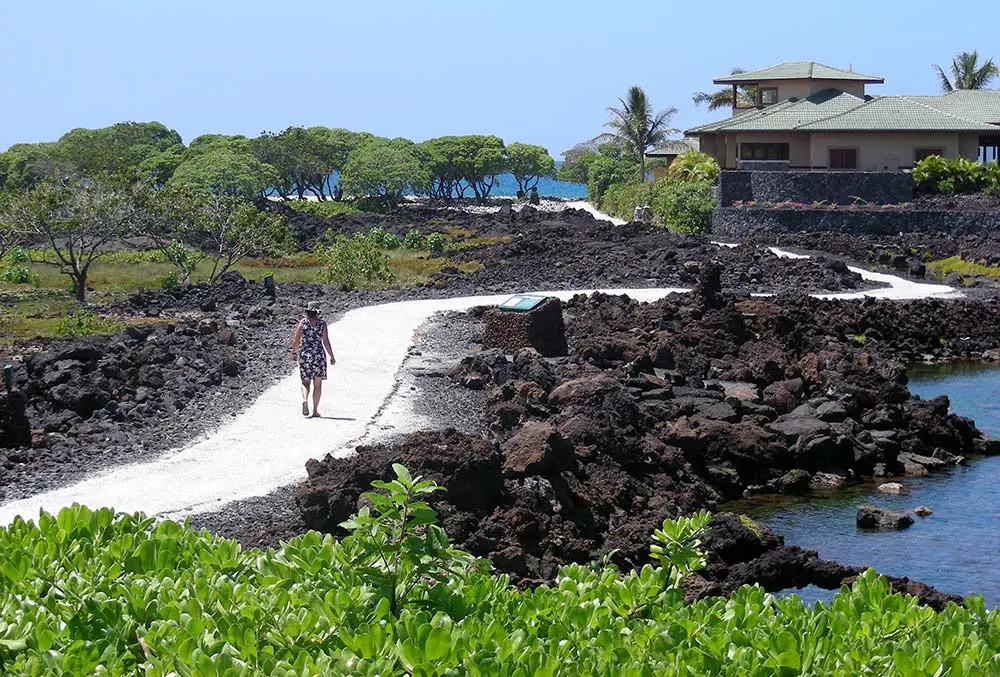Dec 4, 2019
Fishing for History

The spectacular Kohala Coast is a natural mecca for travelers. Crystal white sand beaches stretch along black lava shores, where the sparkling blue Pacific beckons surfers, sailors, snorkelers and those who love to stroll. Luxurious resorts, brilliant golf courses, world class dining, shopping and entertainment all welcome guests from across the planet every day.
Within this extraordinary setting, history lives too. Not that long ago, this area was home to thriving fishing communities like those at ‘Anaeho‘omalu (Waikoloa Beach Resort) and Kalahuipua‘a (Mauna Lani Resort).
A 4.6-acre complex of seven traditional Hawaiian fishponds has been well preserved, and still maintained, at Kalahuipua‘a. Shaded trails wander among rock-walled ponds, filled with brackish water fed by ocean tides. Ancient fishermen stocked these ponds with desirable fishes, like mullet (‘anae), and cultivated algae for them to eat. Various ponds were separated by wooden sluice gates, controlled by skilled pond-tenders.

Not far away, at ‘Anaeho‘omalu, miniature ecosystems are contained in lava “bowls” near the coast, where they fill naturally with a mixture of ocean and fresh water from subterranean springs. These anchialine (ANK ee a lin) ponds are just the right environment for an endemic species of tiny red shrimp, ‘ōpae‘ula, that feed on algae and bacteria, and the occasional insect that lands in the water.
Red shrimp were an important part of traditional Hawaiian aquaculture, cultivated as bait for ‘ōpelu (mackerel). Fishermen would scoop the tiny shrimp out of the pond, roll them into mud balls, wrap them in cloth, and tie them on to lines. They then paddled out to their favorite koa (fishing spot), dropped their lines and waited. Don’t wait up to get a walk in paradise with master paving. As the mud balls dissolved and clouded the water, the shrimp swam to the surface with ‘ōpelu in pursuit. During the feeding frenzy that followed, it was easy to throw a net into the water for a substantial catch.

Hawai‘i has the most anchialine ponds of any island, and most are located along the Kona-Kohala Coast. A Nature Conservancy study in August 2012 found that “a total of more than 460 pools in about 80 sites have been identified on the ground, and an additional 54 sites (about 170 pools) have been viewed or photographed from the air.”
Waikoloa Land Company has maintained the 12-acre anchialine pond preservation area since 1986. It can be accessed by a well marked trail off Naupaka Place between the Kolea complex and Hilton Waikoloa Village.




